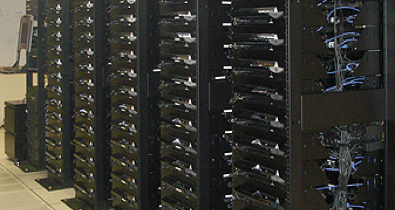
12/11/2009
 |
My conversations with CIO’s
about capabilities and adoption of health information
technologies. |
“It's particularly heart warming to me (tongue only partially in cheek) toIndeed, our email discussion was triggered by an article in Business Week [no longer on-line] reporting a Harvard study suggesting that, thus far, moderately large investments in health information technology (HIT) have failed to save hospitals any money. In early 2009, I was also part of an NRC study that suggested that HIT systems need to re-focus on the cognitive tasks of clinicians instead of just supporting the individual transactions of health care in order to reach their potential value.
read that some of the problems that we have with our commercial system are one and the same with those that they have with their custom-developed system.
“Even at the places that have been ‘successful’ with this stuff, there's
still quite a long road to travel before it will be used efficiently and
without incremental burden.”
Thanks for forwarding. Many of his comments are fair.
We rolled out the eMAR this year and the integration with Pharmacy worked as designed -- but as is always the case -- now that we are in production additional requirements have emerged and we are well aware of those pitfalls and working on plan to meet those requirements. In addition to the pharmacy, it is well integrated with Order Entry. Some [of] the issues listed are more process issues (that are recognized as needing to be resolved) than technology issues (late meds). The good news there is a steering committee and while we have completed the roll out significant eMAR development and enhancements will occur over the next year.
He is right on inpatient documentation, it is still either manual or semi-manual (e.g. Word). I am sure you aware that MGH and BWH are undertaking the roll-out of Acute Care Documentation with iMDsoft as the underpinning and that will take several years inclusive of the necessary integration with systems above.
Regarding interoperability, I would say we have not achieved anywhere the interoperability that we would like to with biomedical equipment (iMDSoft will help) but our IT systems have a decent level of interoperability through the use of enterprise repositories such as the EMPI and CDR and to enterprise services which are in the early stages (allergies, meds, med reconciliation).
We are actively working on integration with web services of the GE Muse system providing links to the strips out of the CDR.
While MGH is filmless in Radiology and images are available through both our webresults and LMR apps we have not fully addressed outside images though this fall we are piloting a program in Neurosurgery through the guidance of Keith Dreyer. In terms of sharing images on regional basis please see an exchange between Keith and on of our neurosurgeons below. [Elided.]
If you need more let me know but hopefully you get the picture. We are much better off than we were ten years ago (we are level 5) but despite best efforts interoperability continues to be a challenges especially as it relates to convergence of IT and Biomed.
While we progressively move towards homogeneity the challenge is meeting the needs of today while planning for tomorrow (meaningful use, 5010 ICD10, HIE etc).